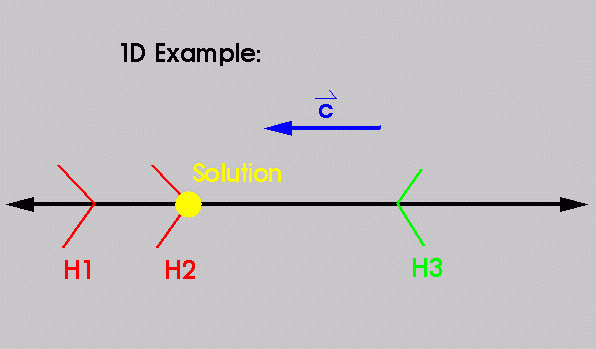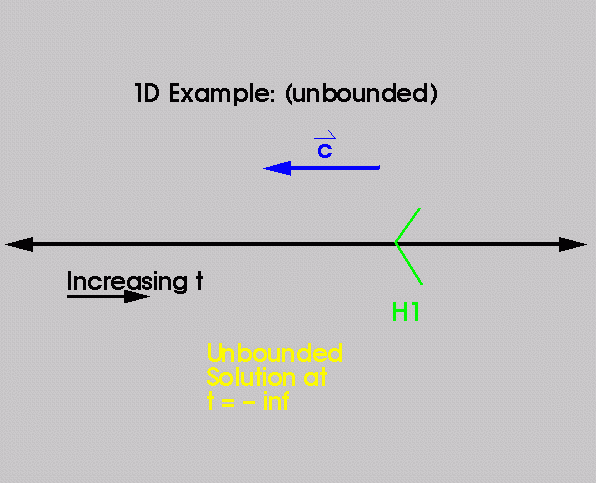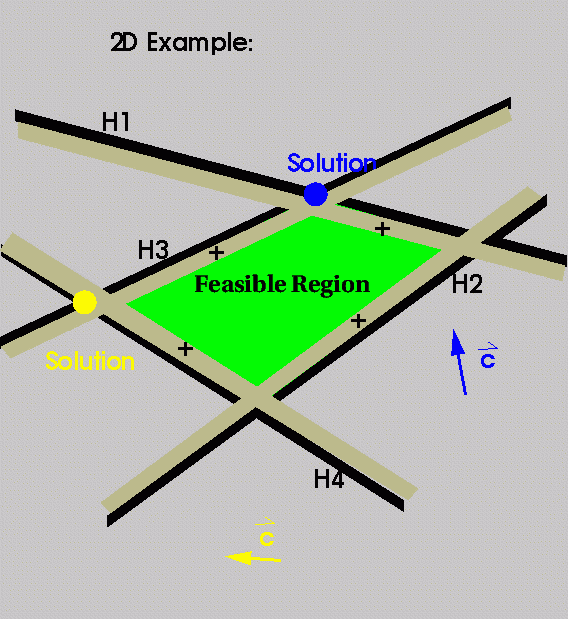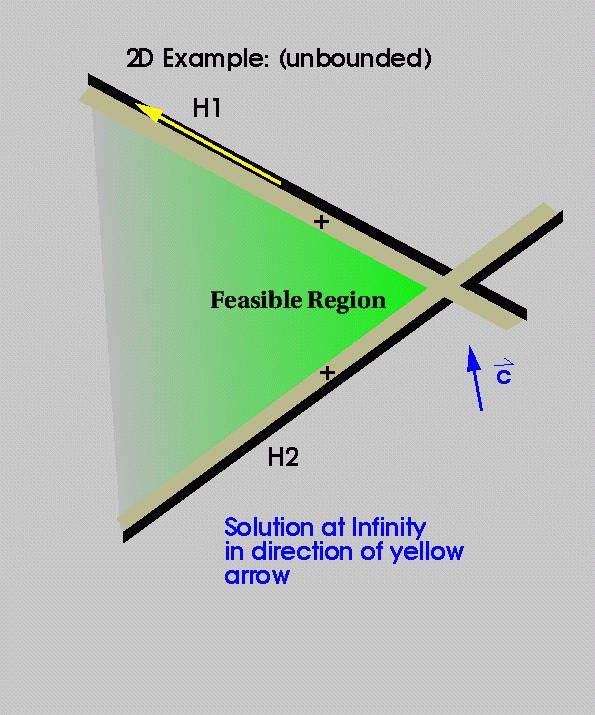Low-Dimensional Linear Programming
Presentation by: Marc Lebovitz
What is Linear Progamming?
Linear programming maximizing an objective
function with respect to a given set of constraints.
An instance of an LP is defined
as:
1. set of constraints: halfspaces H1->Hn
2. objective function: vector c
Here's a 1D Example:
 The space is linear, parameterized on t.
The space is linear, parameterized on t.
Halfspaces are lower or upper bounds on t. They
are represented by 2 #s: 1. value for t 2. max/min indicator
Objective Function is to maximize or minimize t, and
can be represented by 1 #.
The solution, if it exists and is finite, must lie on
either the maximum lower bound or the minimum upper bound.
Which should it lie on? Consult the objective function.
 Why is this case infeasible? The maximum lower bound
is greater than the minimum upper bound.
Why is this case infeasible? The maximum lower bound
is greater than the minimum upper bound.
 This case is unbounded. There is no lower bound and
the objective function is to minimize t.
This case is unbounded. There is no lower bound and
the objective function is to minimize t.
Therefore, the solution is t = - Infinity.
Now, let's move into 2 dimensions and see how we solve
LP problems there:
 Halfspaces are halfplanes and can be represented by 3 #s:
A,B,C where Ax+By+C >= 0.
Halfspaces are halfplanes and can be represented by 3 #s:
A,B,C where Ax+By+C >= 0.
The objective function can be represented by 2 #s: vector
c = (x,y)

 In 3D, halfspaces are bounded by planes: Ax+By+Cz+D >= 0
In 3D, halfspaces are bounded by planes: Ax+By+Cz+D >= 0
objective function is a 3-vector: (x,y,z)
In d dimensions:
halfspace constraints are represented by d+1 #s:
C0 *X0 + C1 *X1 + ... + Cd
*Xd + Cd+1 >= 0
objective function is represented by d #s
(F0, F1, ... , Fn)






